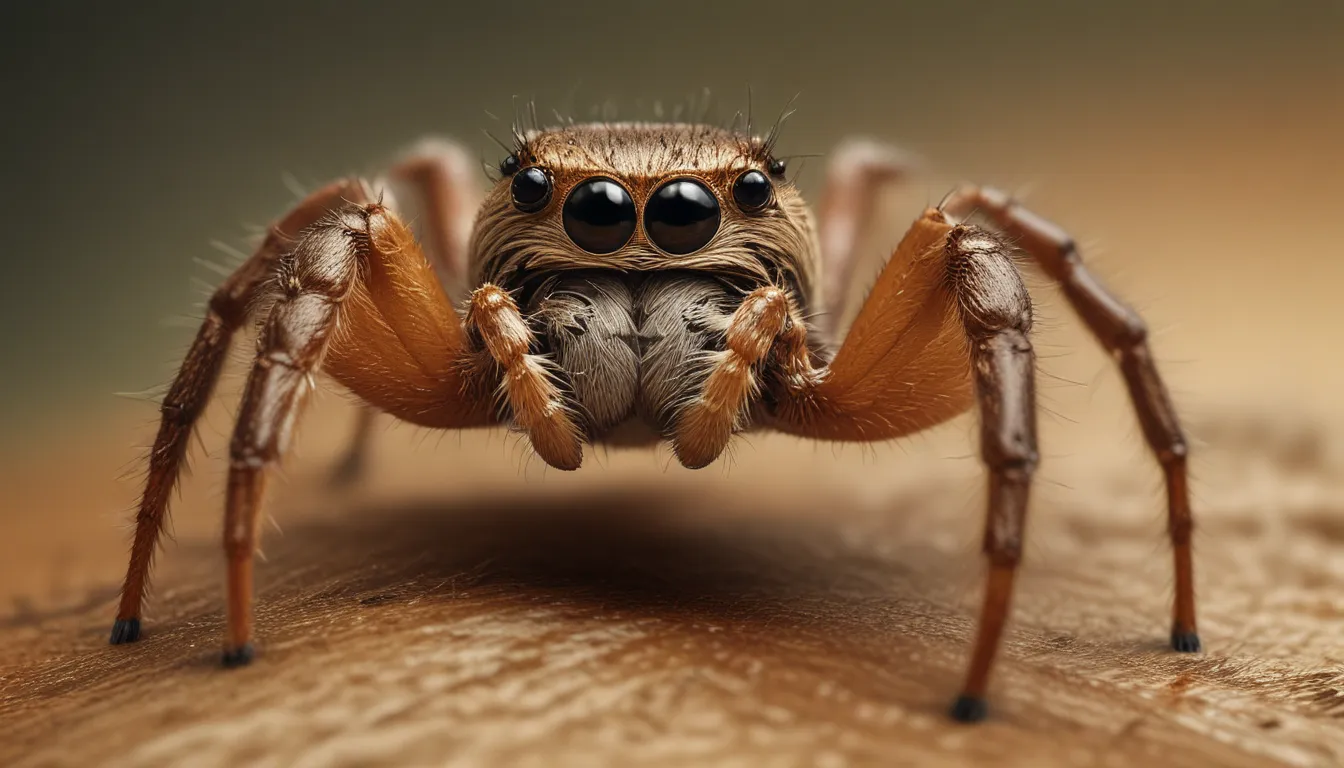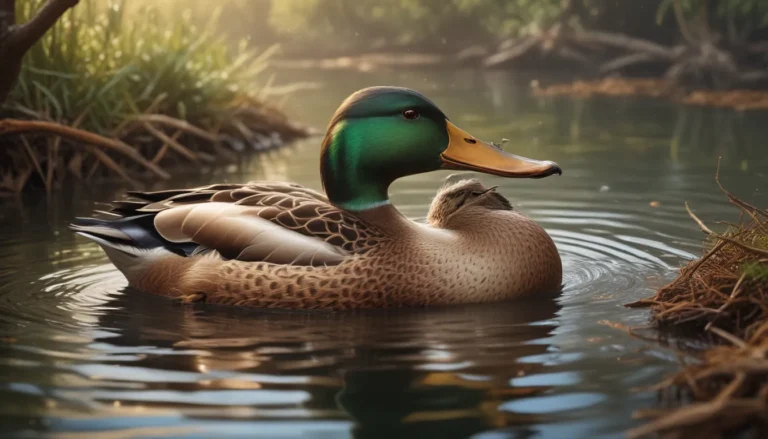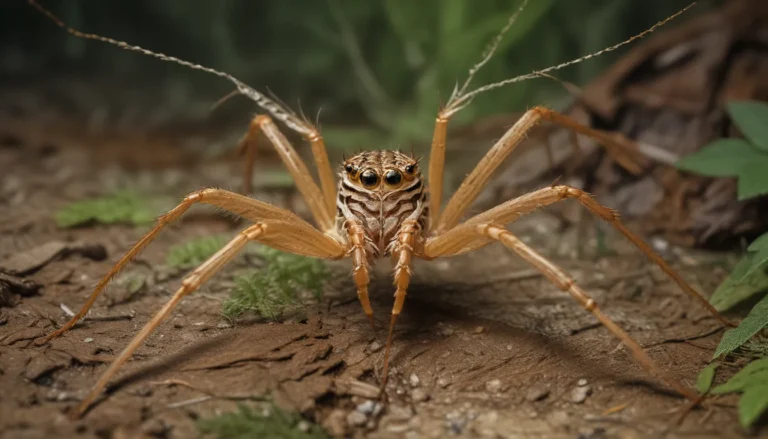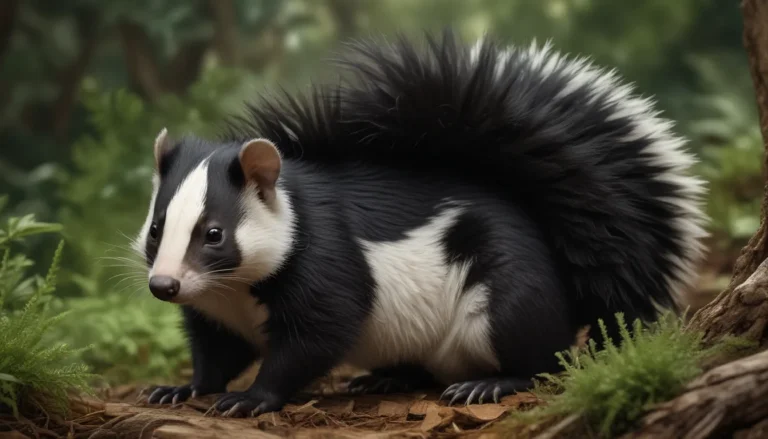The pictures we use in our articles might not show exactly what the words say. We choose these pictures to make you interested in reading more. The pictures work together with the words but don’t take their place. The words still tell you the important facts.
Are you someone who finds spiders creepy and terrifying? You're not alone. Spiders often get a bad reputation for their appearance and behavior. However, what if we told you that there are spider species out there that are not only harmless to humans but also incredibly adorable? Yes, we're talking about jumping spiders! These little creatures may just change the way you look at spiders altogether.
Jumping spiders are truly unique beings with fascinating characteristics and behaviors. From their eight eyes, which may remind you of puppy dog eyes up close, to their incredible jumping abilities, there's so much to learn about these tiny arachnids. Are you ready to delve into the world of jumping spiders and discover some amazing facts that will leave you in awe? Let's jump right in!
The Jumping Spider Family is Everywhere!
Jumping spiders belong to the Salticidae family, which is the largest group of spiders in the world, comprising at least 6,200 species. These spiders can be found almost everywhere on Earth, except for polar regions. From tropical forests to chiller climates, jumping spiders have truly made their mark across the globe. Even Mount Everest slopes have been home to these agile jumpers!
A Jumping Spider’s Legs are Not That Super
Despite their incredible jumping abilities, jumping spiders do not have muscular legs to support their acrobatics. Instead, they rely on blood flow and segmented legs to propel themselves into the air. By creating extreme pressure in their bodies and extending their legs rapidly, jumping spiders can perform their impressive jumps without strong leg muscles.
The Silk a Jumping Spider Produces Gives Them a Smooth Landing
Like other spiders, jumping spiders produce silk, which serves as a safety net during their jumps. This silky web line helps them navigate and land smoothly after their daring leaps. The silk also aids them in gaining direction mid-jump, ensuring a controlled and precise landing every time.
A Male Jumping Spider Has a Special Dance
When it comes to attracting mates, male jumping spiders have a unique way of showing off. Through a special dance that involves abdominal beats, leg waving, and even foot tapping, male jumping spiders woo their potential partners with intricate moves that showcase their agility and charm.
Unlike Other Spider Species, a Jumping Spider Does Not Use Its Web to Catch Prey
While many spider species rely on their webs to catch prey, jumping spiders have a different approach. With their exceptional jumping skills and venomous bite, they can catch their meals without the need for a web. Their diet primarily consists of small insects and plant matter, and their venom, while potent for their prey, poses no significant threat to humans.
Instead of Having Ears, a Jumping Spider Has Sensory Hairs to Hear
Despite lacking traditional ears, jumping spiders have excellent hearing capabilities thanks to sensitive sensory hairs distributed across their bodies. These hairs allow them to detect vibrations from sound waves and communicate effectively in their environment. Their hearing prowess showcases the remarkable adaptations of these tiny arachnids.
The Vision of a Jumping Spider is One of the Best in the World
With their unique eye arrangements and oversized eyes, jumping spiders have exceptional vision that rivals some of the best in the animal kingdom. Their four sets of eyes provide them with a range of visual abilities, including color vision, spatial acuity, and motion detection. Their keen eyesight allows them to navigate their surroundings with precision and efficiency.
A Jumping Spider Relies on Visual Courtship for Reproduction
When it comes to courtship, jumping spiders engage in intricate displays that rely on visual cues and body movements. Male spiders perform elaborate dances, sideling, zigzagging, and vibrating their bodies to attract female mates. Through visual courtship and precise movements, jumping spiders ensure successful reproduction and the continuation of their species.
Although a Jumping Spider Has a Tiny Brain, They Are Smart
Despite having a brain the size of a poppy seed, jumping spiders demonstrate remarkable intelligence in their behaviors. Research shows that these spiders possess intricate spatial memory and strategic hunting skills, planning out complex routes to capture their prey effectively. Their small brains belie their cognitive abilities, showcasing the intelligence of these fascinating creatures.
The Most Intelligent Spider in the World is a Jumping Spider
One particular species of jumping spider, known as the Fringed Spider or "Portia Fimbriata," stands out as the most intelligent spider in the world. Found in Southeast Asia and Australia, these spiders exhibit advanced cognitive abilities and learning capabilities. By adapting their hunting techniques and strategizing based on their experiences, Fringed Spiders demonstrate exceptional intelligence in their survival tactics.
In conclusion, jumping spiders are truly extraordinary creatures with a wealth of fascinating traits and behaviors that set them apart from other spider species. From their incredible jumping abilities to their keen senses and intelligent strategies, these tiny arachnids have captured the curiosity of scientists and enthusiasts alike. By exploring the world of jumping spiders and delving into their unique characteristics, we gain a deeper appreciation for the diversity and complexity of the natural world. So, the next time you encounter a jumping spider, remember the incredible feats and remarkable qualities that make them one of nature's most intriguing creatures!
We hope you've enjoyed this journey into the world of jumping spiders and gained valuable insights into these amazing arachnids. Stay curious, keep exploring, and embrace the wonders of the natural world with open arms!






